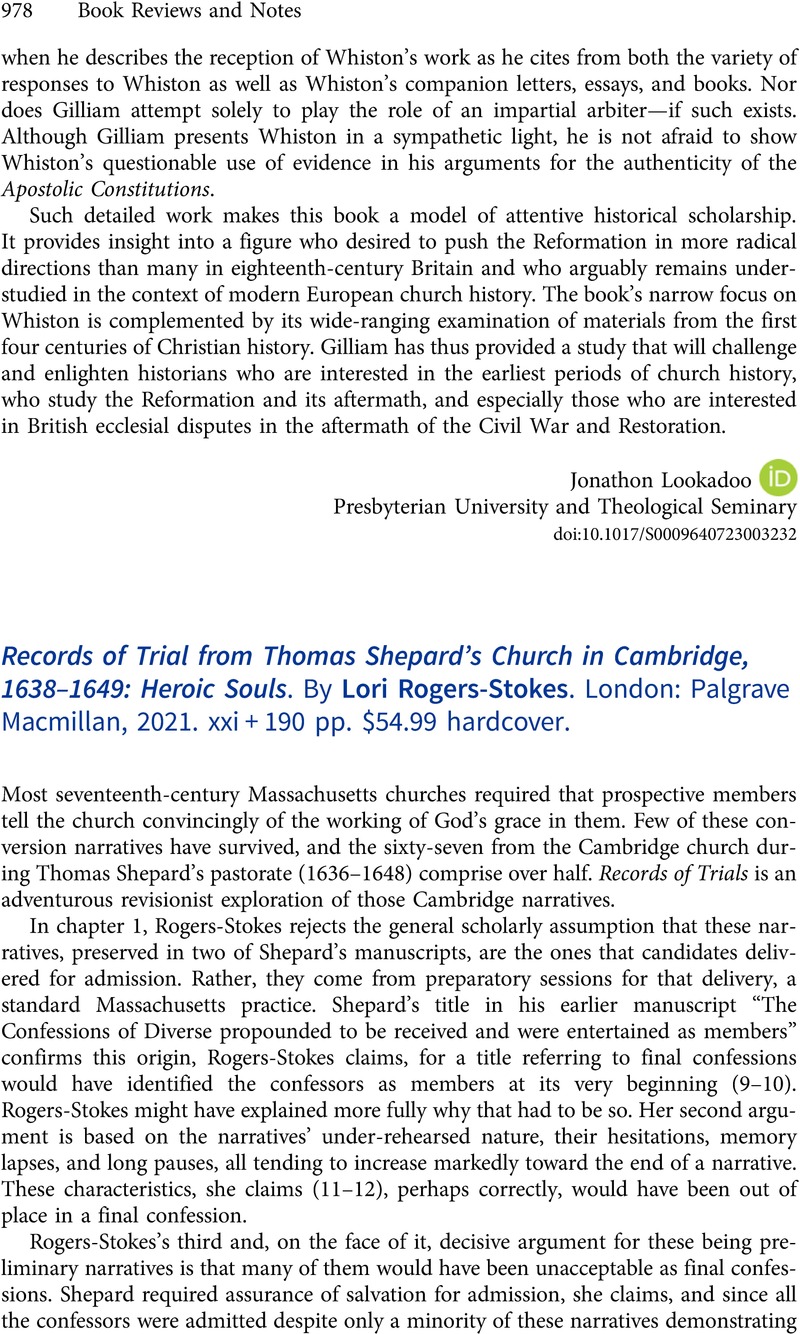No CrossRef data available.
Article contents
Records of Trial from Thomas Shepard's Church in Cambridge, 1638–1649: Heroic Souls. By Lori Rogers-Stokes. London: Palgrave Macmillan, 2021. xxi + 190 pp. $54.99 hardcover.
Review products
Records of Trial from Thomas Shepard's Church in Cambridge, 1638–1649: Heroic Souls. By Lori Rogers-Stokes. London: Palgrave Macmillan, 2021. xxi + 190 pp. $54.99 hardcover.
Published online by Cambridge University Press: 19 March 2024
Abstract
An abstract is not available for this content so a preview has been provided. Please use the Get access link above for information on how to access this content.

- Type
- Book Reviews and Notes
- Information
- Copyright
- Copyright © The Author(s), 2024. Published by Cambridge University Press on behalf of American Society of Church History


